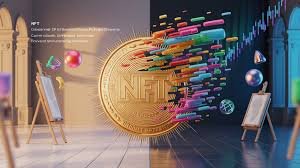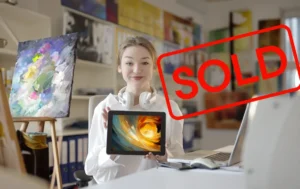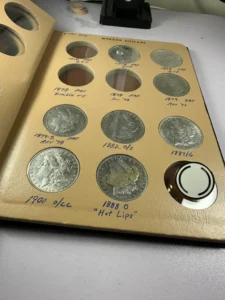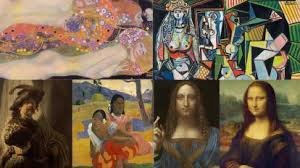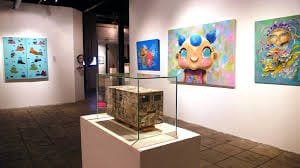Summary
NFTs in modern art and cultural preservation help creators own and monetize digital works while protecting cultural heritage.
Artists use NFTs for direct sales, royalties, and authentication.
Museums and communities use NFTs to digitize artifacts, raise funds, and fight cultural appropriation.
Ethical use requires community collaboration, authenticity, and sustainable practices.
In the digital age, where nearly everything from music to books to money exists online, art and culture are finding powerful new homes through technology. One of the most groundbreaking tools in this shift is the rise of NFTs—Non-Fungible Tokens. Understanding the role of NFTs in modern art and cultural preservation isn’t just a tech trend; it’s a bridge between creators and legacy, between traditions and future generations.
If you’ve been curious about how NFTs are changing the art world and what they mean for preserving our cultural identity, you’re not alone. Whether you’re an artist, collector, museum-goer, or someone who just appreciates creativity and heritage, grasping the role of NFTs in modern art and cultural preservation will help you see why this movement matters—and how you can be a part of it.
What Are NFTs, and Why Do They Matter?
NFTs, or Non-Fungible Tokens, are unique digital assets stored on a blockchain. Unlike Bitcoin or dollars, which are interchangeable (or “fungible”), NFTs represent ownership of something distinct, like a piece of art, music, or even a tweet.
They use blockchain technology to ensure that ownership, authenticity, and transaction history are permanently recorded. This means an artist can create a digital painting, mint it as an NFT, and sell it with proof that it’s the original—something that was nearly impossible to verify in the digital world until recently.
How NFTs Are Transforming Modern Art
1. Empowering Artists with Ownership
Traditionally, artists sold physical works through galleries or agents, often earning a single payment while future resales profited others. With NFTs, artists can sell directly to buyers and even earn royalties on resales automatically. This gives artists more control over their work and their income.
Emotional connection: Imagine being a digital artist who’s finally recognized not just for talent but for ownership. That’s powerful.
2. Expanding Access to Audiences
NFT platforms like OpenSea, Rarible, and Foundation have become digital galleries where anyone with internet access can explore, collect, or display art. This breaks down the traditional barriers of location, price, and privilege.
3. Authenticating Digital Creations
NFTs solve a long-standing problem in digital art: proof of authenticity. With blockchain-backed verification, a collector knows the exact origin of a digital artwork, who created it, and who has owned it.
Cultural Preservation in the Digital Age
Preserving culture has traditionally been the domain of museums, libraries, and universities. But what happens when languages die out, oral histories fade, or ancient artifacts are at risk of destruction?
Enter NFTs.
1. Digitizing Cultural Artifacts
Cultural institutions are using NFTs to digitize endangered items—texts, artifacts, music, folklore—and preserve them on the blockchain. This ensures they can be accessed, shared, and appreciated for generations.
Example: A tribal group can tokenize their traditional dance or oral storytelling and embed it in a blockchain ledger, protecting its origin and keeping it alive beyond geography or political change.
2. Funding Cultural Projects
By minting NFTs tied to cultural heritage (e.g., indigenous art or endangered crafts), organizations can raise funds to support education, preservation, or restoration projects. Buyers are often supporters of the cause, not just collectors.
3. Fighting Cultural Appropriation
NFTs enable creators—especially from indigenous or marginalized communities—to claim clear authorship. That’s a major win against unauthorized use or exploitation of cultural content.
Emotional and Ethical Considerations
NFTs introduce exciting opportunities, but they also bring questions:
Who has the right to mint a cultural item as an NFT?
Should sacred or communal traditions be tokenized?
Can digital ownership respect the values of indigenous communities?
These are essential questions. The best NFT projects in the cultural space work with communities, not just about them. They ensure shared revenue, credit, and respectful storytelling.
Examples of NFTs Preserving Culture
1. The British Museum
The British Museum partnered with a blockchain platform to tokenize some of its most famous artworks, making them available as collectible NFTs. This both raises funds and extends access to art lovers worldwide.
2. Kazakhstani Heritage NFTs
Local artists and historians minted NFTs of traditional Kazakh clothing designs, dance rituals, and instruments, both preserving and monetizing them for community benefit.
3. World of Women and Other Identity-Driven NFT Projects
NFT collections like World of Women or Afrofuturism-based art celebrate identity, history, and cultural expression, using blockchain as a platform for visibility and pride.
The Role of Museums and Institutions
Forward-thinking museums are embracing NFTs for:
Virtual exhibitions that reach global audiences
NFT-based memberships or donations to support operations
Digital repatriation, where tokenized items are shared with original communities while physical artifacts remain protected
For example, a museum in Europe could mint a 3D scan of an African mask and share that NFT with a cultural group that wants digital access to its heritage.
Benefits of Using NFTs for Cultural Preservation
Immutability: Blockchain records cannot be altered, ensuring that history remains intact.
Global Reach: Anyone with a smartphone can experience cultural treasures.
Revenue Models: Artists, storytellers, and historians can earn from their work.
Community Empowerment: NFTs give communities more say over how their heritage is shared.
Challenges and Criticism
Let’s be honest—NFTs are not a perfect solution. Common concerns include:
Environmental impact: Some blockchains consume a lot of energy. (Though many are shifting to eco-friendly models like Proof-of-Stake.)
Speculation and scams: Some NFT sales are more about hype than heritage.
Access barriers: Not everyone understands how to use crypto wallets or mint NFTs.
But with the right guidance and platforms focused on purpose over profit, these challenges can be overcome.
A Future Rooted in Legacy and Innovation
The beauty of NFTs isn’t just in the tech—it’s in what they allow us to do. For the first time, we can preserve our stories, art, and culture in a format that lives beyond borders, beyond time, and physical decay.
Picture a grandmother in rural Mexico who records a folk song, which her grandson mines into an NFT. That piece of history now lives forever on the blockchain. Or a young artist from Harlem whose visual poetry about Black history is bought, sold, and celebrated around the world, without ever entering a traditional gallery.
This is more than crypto art. It’s cultural continuity.
Final Thoughts: You Are a Part of This
If you’ve ever created art, supported a local culture, visited a museum, or told a family story—you’ve already played a role in cultural preservation.
NFTs offer new tools to continue that legacy. You don’t need to be a tech genius or millionaire. Just someone who believes that culture matters—and wants to see it thrive in a digital world.
So go ahead: explore, learn, create, support. Because when we connect our past to the blockchain and our art to the future, we build something timeless.
NFTs and culture aren’t opposites—they’re allies. Let’s use them wisely.

